Armored vehicles of Germany in the Second World War. Heavy tank Pz Kpfw VI Ausf H "Tiger" (Sd Kfz 181)
The order from the weapons department was taken up by E. Aders, the head of the new development department, who was later recognized as the “father of tigers” (Tigerfater). His first car was DW1 (breakthrough machine, Durchbruchswagen), made in a single copy. DW2 appeared in 1938 year. Having the same chassis as the DW1 (five rollers with an individual torsion suspension), the car reached a speed of up to 35 km / h. In September, E. Aders began work on the amended task (the mass was specified in 30 tons). At the same time, Daimler-Benz, MAN, and KB F. Porsche were attracted to the project.
The designations of the experimental machines and that time were standardized and assigned the identifier VK3001 to the ordered machine. In the cipher, the first two digits are the design weight, the last ones are the sample number.
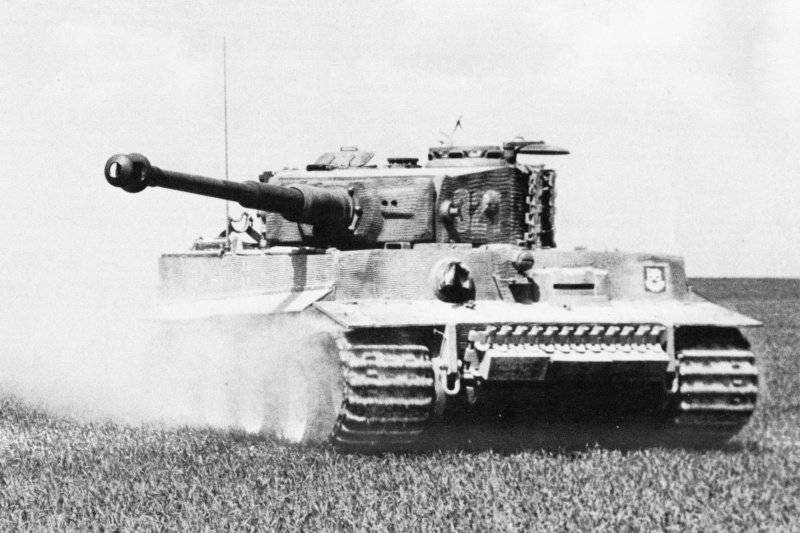
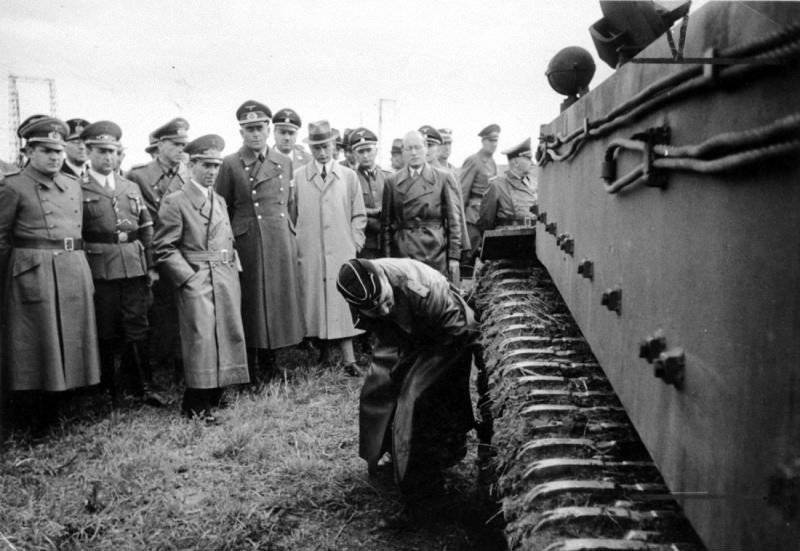
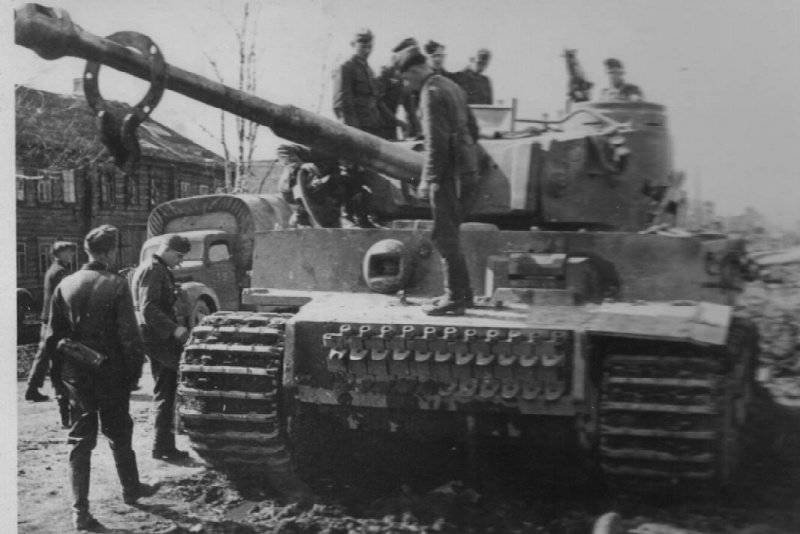
The basis of E. Aders took the car DW2. Henschel manufactured four prototypes that differed slightly - two cars in March 1941 of the year and the same in October. What were these cars like? With a fighting weight of 32, the 300-strong engine delivered tons of speed up to 25 km / h. Chassis - seven (twin and single) rollers placed in a staggered manner, and three supporting rollers. The tank armament is a short-barreled 75-mm cannon and two machine guns. The frontal part of the hull and the tower were made of 50-mm armor plates, the sides - of 30-millimeter. The crew of the tank five people.
While VK3001 (N) was being finalized, the campaign against the USSR began. After the very first battles, it became clear that the Henschel prototypes would not endure a battle with KB and T-34. As for the Porsche, he just tried himself in the design of tanks. Apparently this predetermined further Porsche failures in the field of tank building. Two copies of this machine VK3001 (P) were made in winter 40 — 41's. The tank of a given mass did not exceed and, thanks to a pair of engines having air cooling, developed a speed of up to 60 km / h. Porsche offered electric transmission and a longitudinal torsion suspension with six rollers on board. However, the German industry failed to master this complex structure in the short term and failed to implement the original design.
In May, 41, the company Henschel took up another experimental VK3601 equipped with a gun, a projectile which would pierce the armor with a thickness of 100 millimeters from a distance 1,5 thousand meters. By the way, when this tank was made, the thickness of the bronilists was also 100 millimeters. The machine weighing 40 tons developed a speed of up to 40 km / h. The chassis consisted of eight rollers of large diameter (it was later used on the "Tigers").
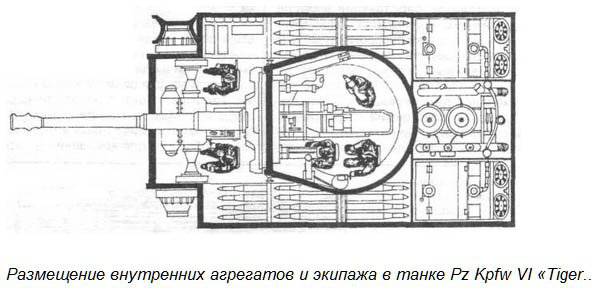
The Ministry of Arms and Ammunition in July 1941 of the year issued an order to F. Porsche and the firm Henschel for VK4501. It was proposed that the machine be designed for 88-millimeter anti-aircraft gun model 1936, which was processed under the tank. The gun was created in 20 with the efforts of two concerns - German Krupp and Swedish Bofors. Having the main purpose of the fight against air targets, the system still became famous as a powerful anti-tank weapons. The Germans in this role tested the system back in Spain. It was especially actively used in the 40 — 42 years on the battlefields of the Second World War against tanks with counter-launch armor — the Soviet KB and T-34, the British and American Shermans, Grants and Matilda. An armor-piercing shell fired from it hit these tanks even at 2 distances - 2,5 thousand meters.
Semi-automatic, with a wedge vertical bolt gun complemented by electric and muzzle brake. After upgrading it was called 8.8cm KwK36 - 8,8-centimeter gun model 36-th year.
Both tanks VK4501 (H and P) were to be made for 20 on April 1942 of the year - Hitler's birthday. That is, time was not enough. Both designers took the best from previous experimental machines. The choice after comparative tests was stopped on Aders’s car, although Hitler supported F. Porsche.
VK4501 (P), which had the designation "Porsche 101", mass 57 tons developed speed to 35 km / h. The crew of the car five people. “Kruppovskaya” tower and weapons were the same as the opponent’s tank. The thickness of the frontal bronilista towers and hull - 100 millimeters, sides - 80 millimeters.
The air cooling system of a pair of ten-cylinder gasoline engines made the Porsche design the best machine for African desert conditions. In July, 1942 of the year even produced five cars at the Nibelung plant in Linz, Austria, and about 90 cases, which received the designation "Tiger (P)" or Pz Kpfw VIP. Both those and others found application: the first used as training machines, excellent tank destroyers emerged from the semi-finished products.
Since August 1942, the company Henschel organized mass production of tanks developed by Aders. Later, similar assembly lines were opened by Wegmann. "Tigers" were issued until August 44 of the year. In the 42 year, the 84 tank was built, in the 43-m - 647 machines, in the 44-m - 623. In April, 44 of the year registered the maximum monthly release - 104 tank.
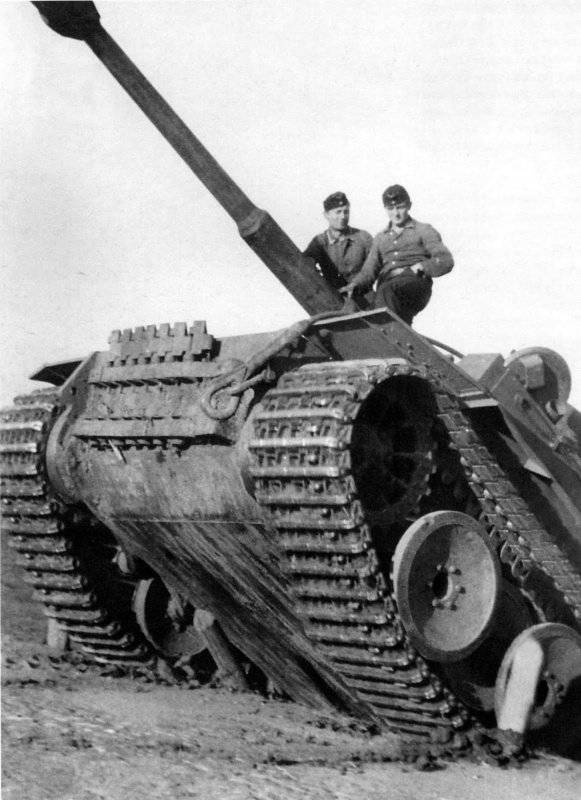
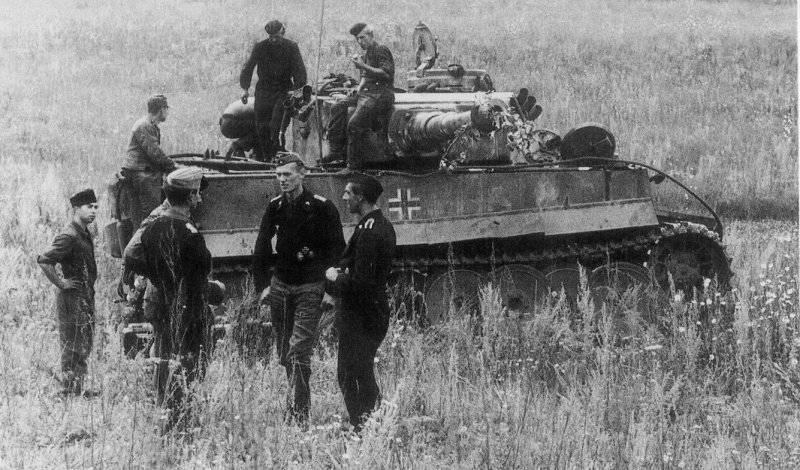
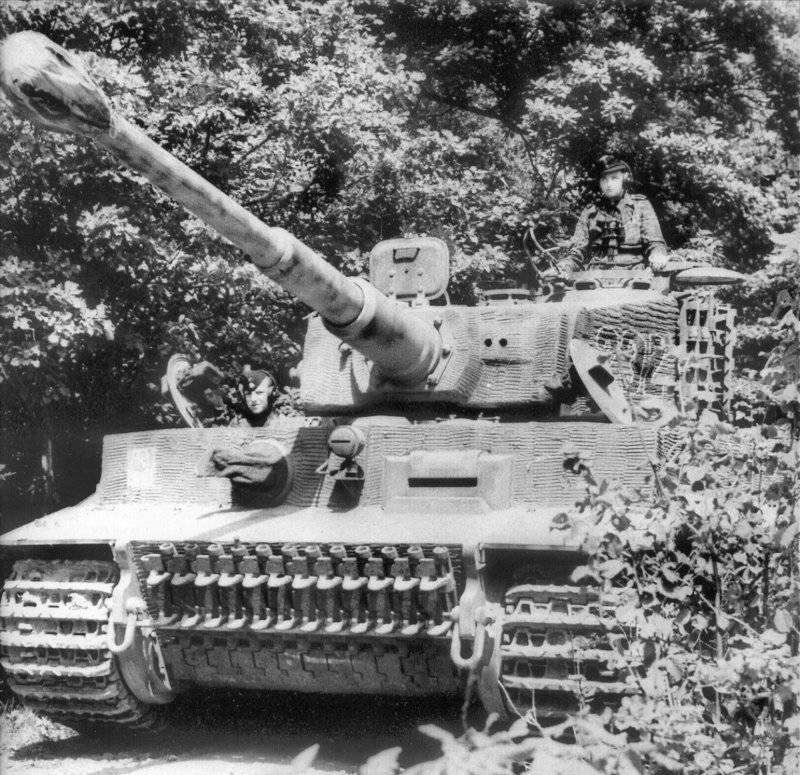
Initially, the cars were officially called Pz Kpfw VI Ausf H "Tiger I". Since February, 44, after adopting the Tiger II, the name was changed to simply Tiger I or Pz Kpfw VI Ausf E. This car is not another modification of the six. There was only one modification. Although, of course, the design still made changes during production.
The combat weight of mass-produced vehicles exceeded the target by more than 10 tons. Since the advent of the tank and for one and a half years, it has been the strongest machine in the world in almost all indicators. First of all, he had a powerful booking. Aders gave the case a box-like rectangular cross section due to a slight inclination of the frontal and vertical installation of the side armor plates. This configuration has accelerated and simplified the process. In addition, armor plates were fixed by welding and joined on spikes. This made it possible to achieve significant mechanical strength. For the manufacture of the bottom used one sheet. Armor - rolled chromium nickel molybdenum, homogeneous.
The internal space of the "Tiger" was divided into four compartments. On the left, in the front compartment, the driver was located, on the right, the radio operator. The multistage gearless type gearbox had eight forward, and also four reverse gears mounted between them. The multi-plate main clutch working in oil and the brake were placed in the gearbox housing. The differential rotation mechanism, having a double power supply, ensured a turn in place and two fixed turning radii in each gear. To control the tank served as a steering wheel through a hydraulic semi-automatic servo. In case of a steering wheel failure, two hand levers were used with drives for disc brakes.
The width of the viewing slot, through which the driver observed the environment, was regulated by a thick armor damper moving vertically. In case of poor visibility, the driver was guided more by the right direction indicator (gyropolucompass), rather than visually. Hatches, cut over the heads of the radio operator and driver, were covered with covers equipped with periscope observation devices. During the shooting of the MG34 frontal machine gun, the radio operator used his periscope to aim.
A horseshoe-shaped tower, curved from 80-mm armor plate with vertical walls, as well as the middle part of the hull, which was separated from the engine compartment by an armored partition, was assigned for the fighting compartment. to the right of the gun, the loader's workplace, to the left, the gunner. Both had narrow viewing slits with a glass block in front of them. The turret was rotated with the help of a hydraulic drive with a gunner, with a foot pressing the pedal. The tank commander dubbed horizontal guidance.
The commander was intended to install a cylindrical turret mounted on the roof of the tower at the rear on the left with a hatch and five viewing slots. Since July, the 43 of the year has been replaced by a unified (the same as on the Panther) spherical turret with seven periscopic perimeter surveillance devices and a circular contour for moving and attaching an anti-aircraft machine gun. On the front wall of the tower were installed three throwing devices designed for fire smoke grenades.
The 88-mm cannon (L / 56) and the paired 7,92-mm machine gun mounted to the right of it were installed in the armor mask (thickness 110 mm). Combat lay placed below the shoulder strap of the tower - under the tower polycom and along the walls of the fighting compartment near the driver. The semi-automatic weapon and the unitary cartridge ensured the firing rate in 8 rounds per minute.
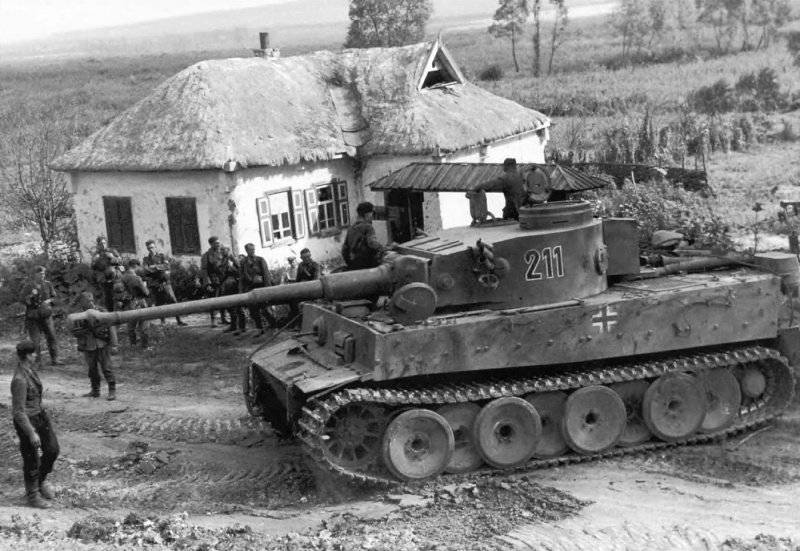
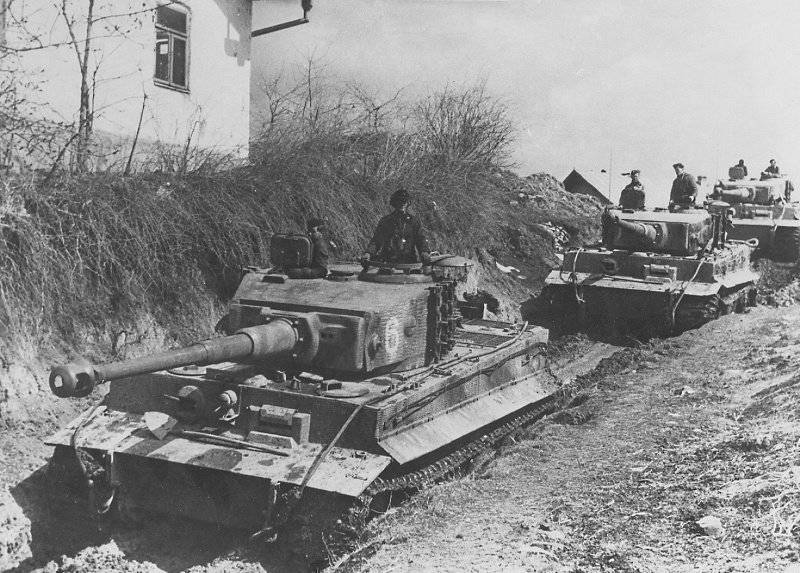
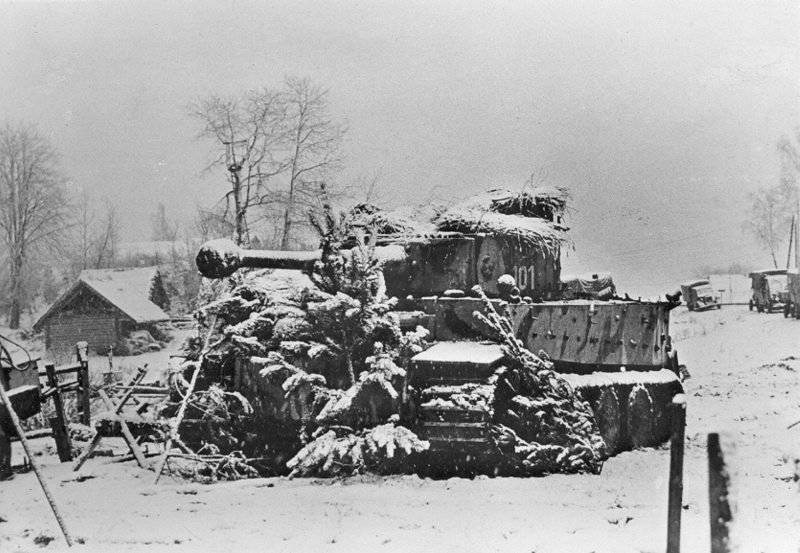
The Tiger was the first German serial tank to have a new undercarriage invented by G. Knipkamp. One side had eight triple road wheels located staggered on a torsion bar with hydraulic shock absorbers in the front and rear blocks. By the way, the Germans had already used such a chassis design on light vehicles — armored personnel carriers and semi-tracked artillery. Suspension evenly distributed the weight of the machine on the track, slightly loading each roller, and also allowed to save on rubber tires. Since January, the 44 of the year have been used rollers without a bandage with internal depreciation (the same as on the Panther).
The engine compartment was installed 12-cylinder carburetor engine "Maybach" HL210P45 with liquid cooling power 650 hp In May, the 43 of the year in connection with the transition to the unification of tank production was replaced by a more powerful HL230P30 that had already been tested on the Panthers.
A progressive transmission with hydraulic servos and a torsion bar suspension made the Tiger an easy-to-operate tank with a smooth ride. The driver did not spend considerable physical effort and did not overwork when driving a tank. Mastering the management was easy. A driver of high qualification was not required, and if he died, any member of the crew could replace him.
The 495 of the early "Tigers" were equipped with equipment for underwater driving, which allowed them to overcome water obstacles to a depth of 4 meters along the bottom. In addition, the first production vehicles were armed with S-melee (Schrapnell). It served to defeat the soldiers who tried to take the damaged tank "on board the ship." Five grenade launchers placed along the edges of the tank hull fired up shrapnel grenades on the 1,5-2 meter. Exploding, they covered all the 360 degrees with steel balls.
In addition to the linear, 84 commander tank made. In order to install a second radio station, reduced the ammunition load of the gun to 66 shots and removed the coaxial machine gun.
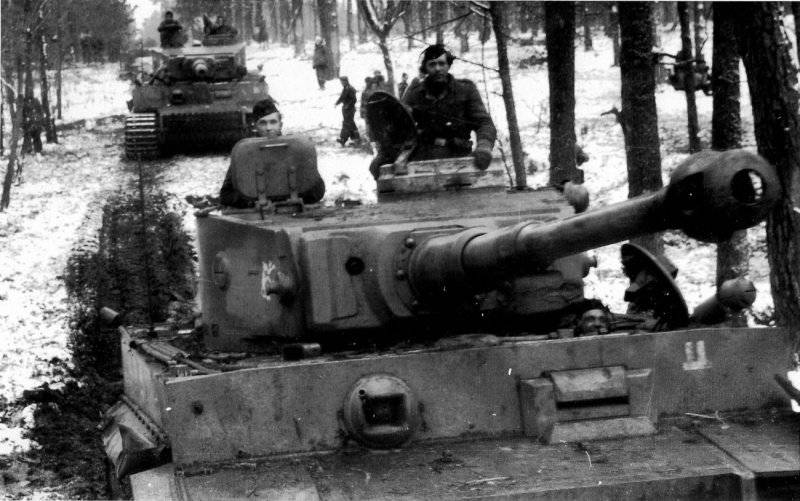
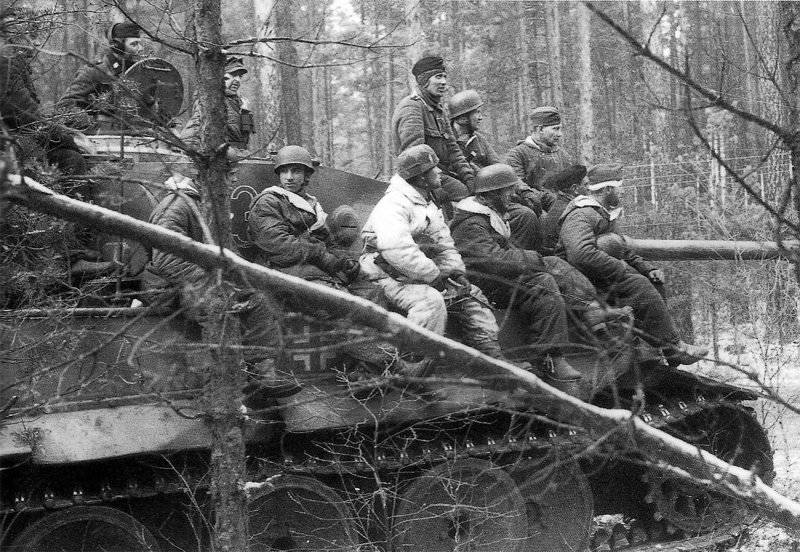
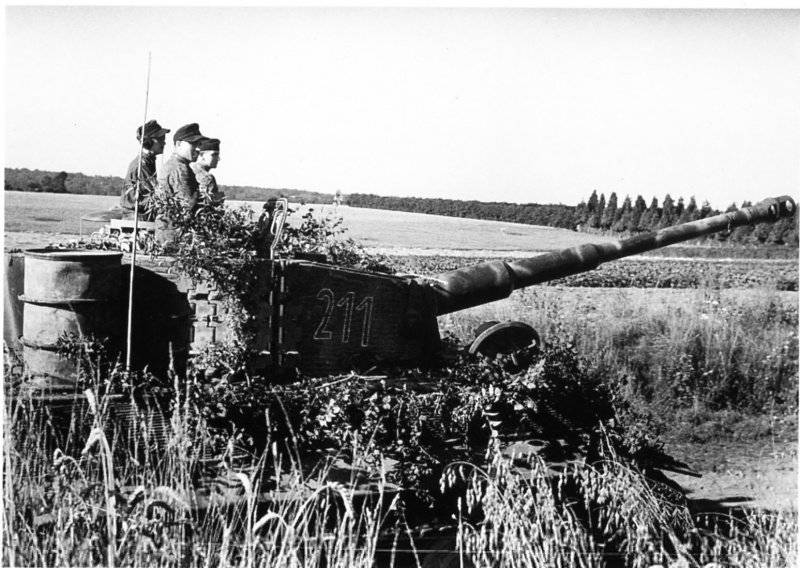
For the first time, the Tigers entered the battle on the Eastern Front in the autumn of 1942, near Leningrad, near the Mga station. Later took part in the battles on all fronts.
Technical characteristics of the heavy tank Pz Kpfw VI Ausf H:
Year of manufacture - 1942;
Combat weight - 57000 kg;
Crew - 5 man;
Main dimensions
Housing length - 6200 mm;
Length with a gun forward - 8450 mm;
Width - 3700 mm;
Height - mm 2860;
Security:
The thickness of the armor plates of the frontal part of the body (angle of inclination to the vertical) - 100 mm (24 degrees);
The thickness of the armor plates of the hull sides (inclination to the vertical) - 80 mm (0 degrees);
The thickness of the armor plates of the frontal part of the tower (angle of inclination to the vertical) - 110 mm (8 degrees);
The thickness of the armor plates of the roof and the bottom of the case - 26 and 28;
Armament:
Brand gun - KwK36;
Caliber - 88 mm;
Barrel length - 56 CPB;
Ammunition - 92 shot;
The number of machine guns - 2;
Machine gun caliber - 7,92 mm;
Ammunition of machine guns - 4800 cartridges;
Mobility:
Type and make of engine - "Maybach" HL230P45
Engine power - 700 l. with.;
Maximum speed on the highway - 38 km / h;
Fuel stock - 570 l;
Cruising on the highway - 140 km;
The average ground pressure is 1,04 kg / cm2.
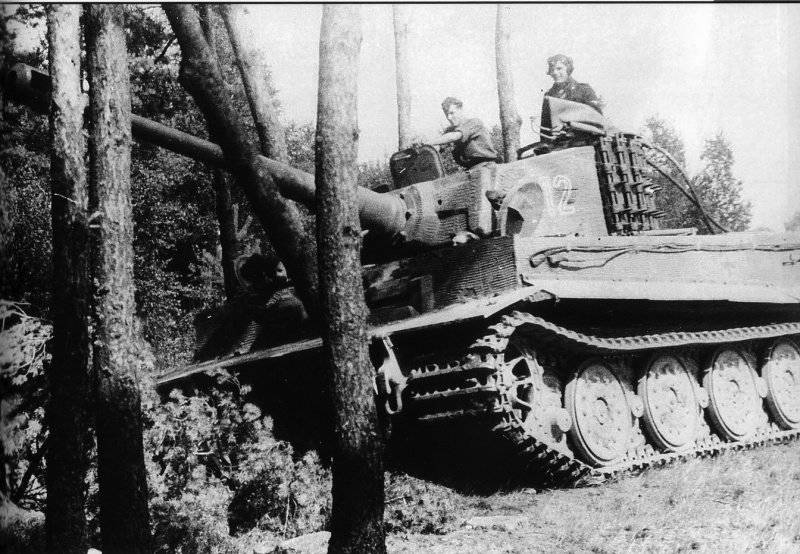
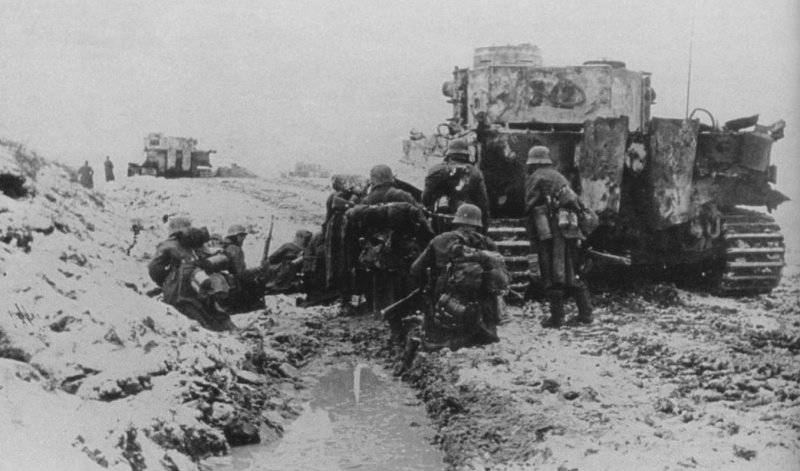
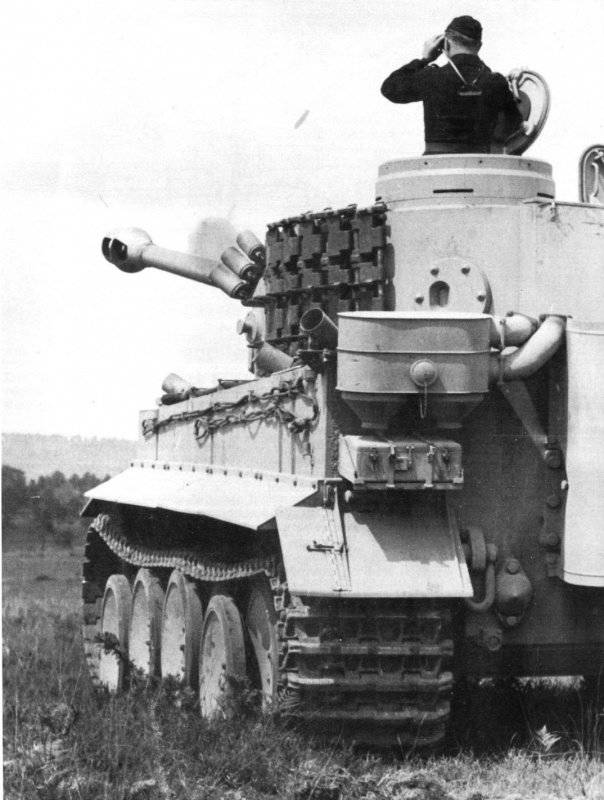
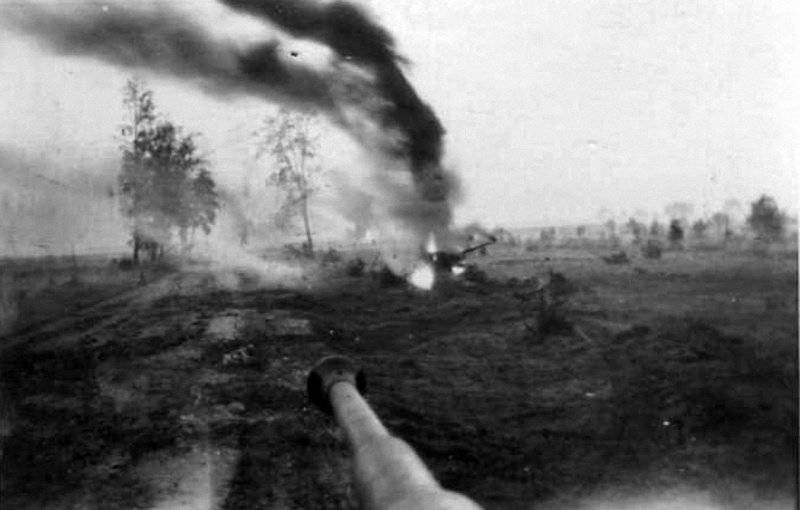
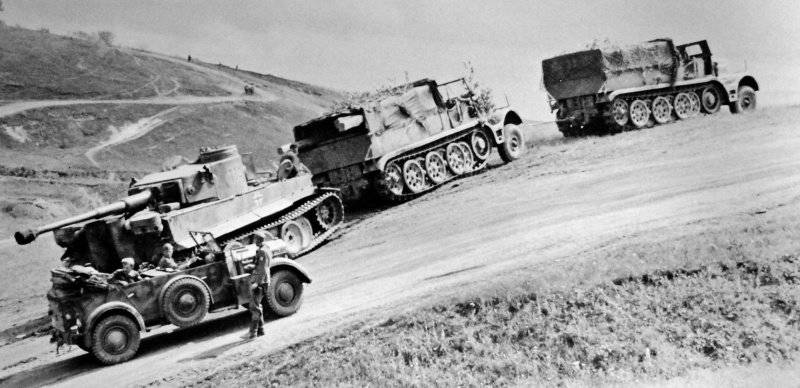
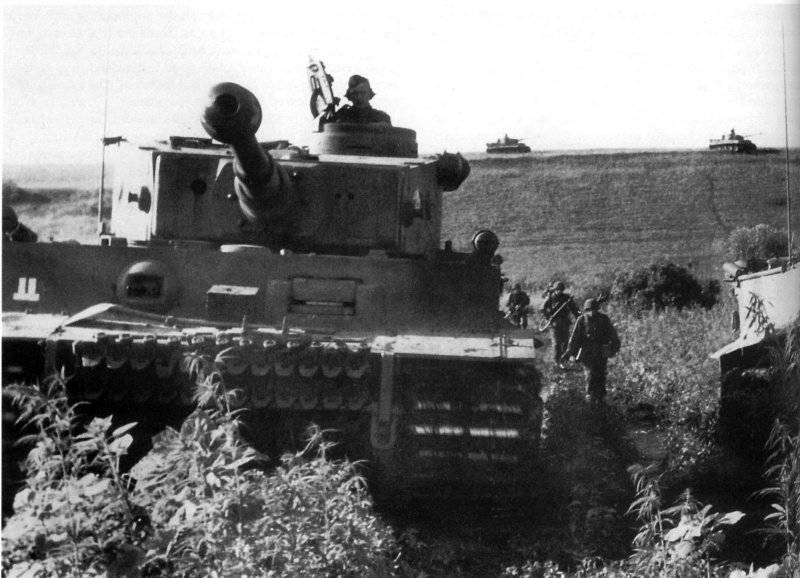
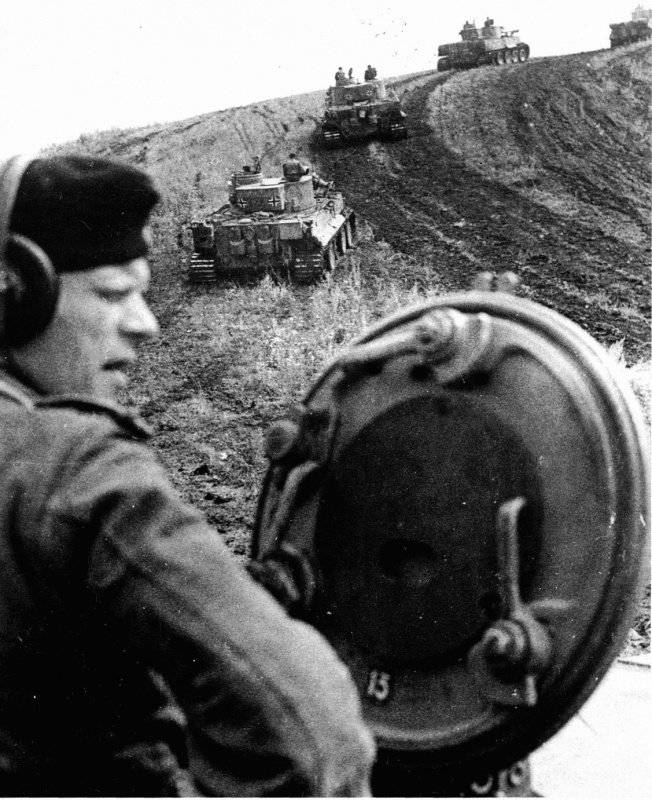
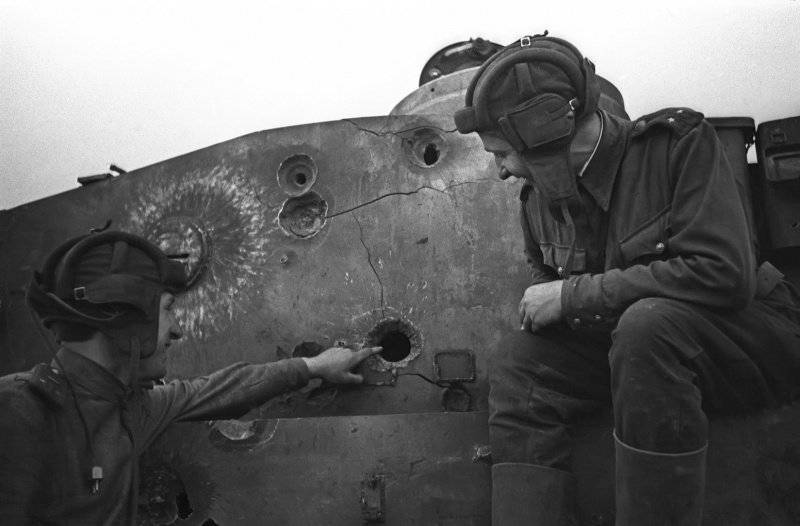
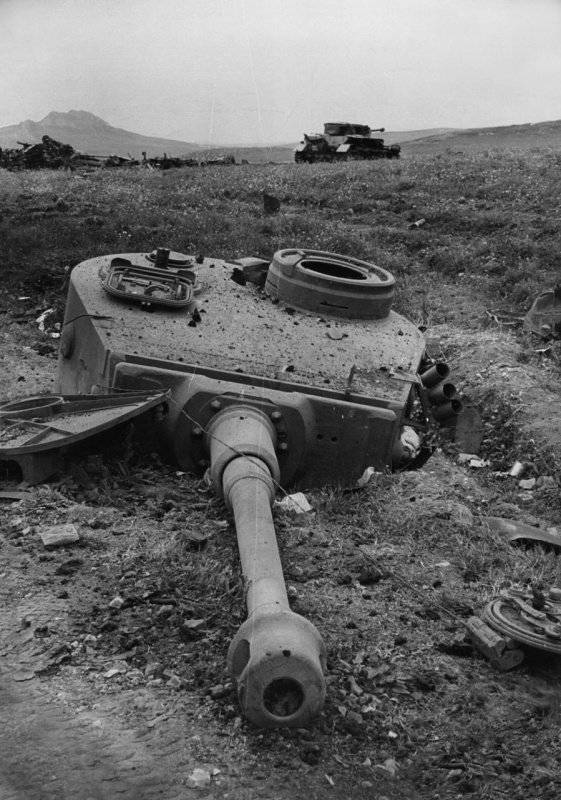
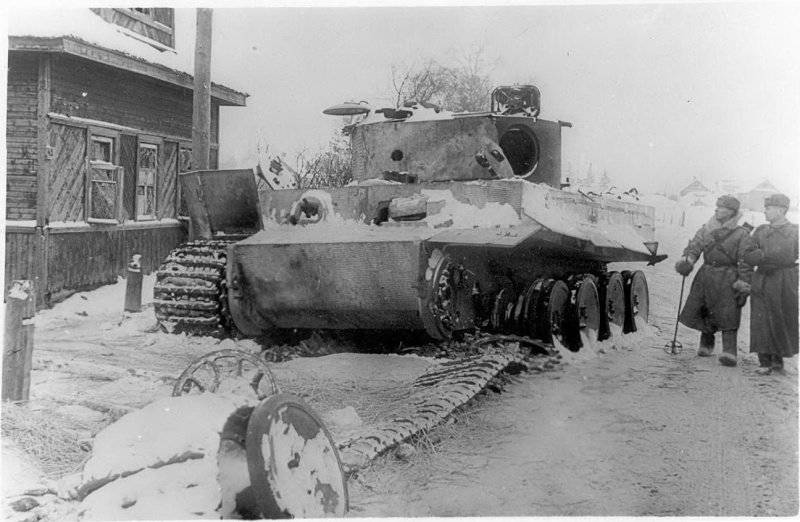
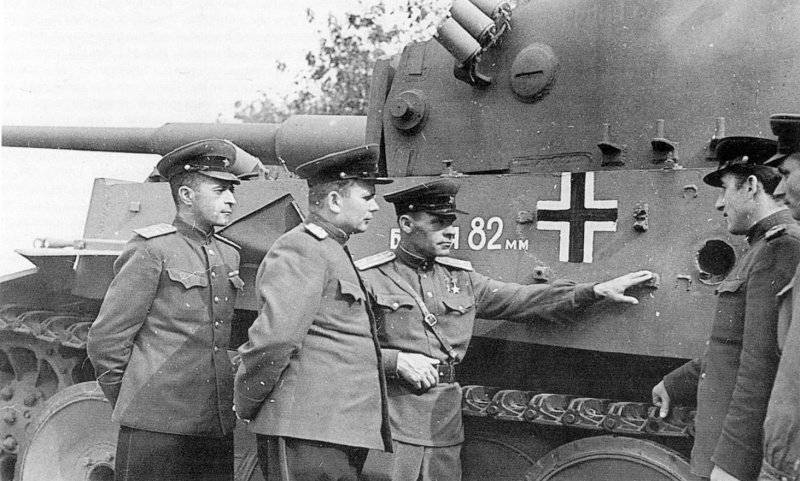
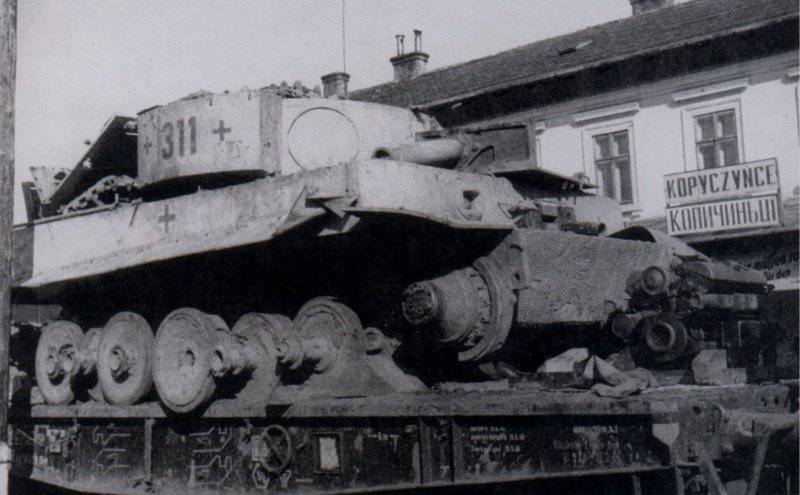
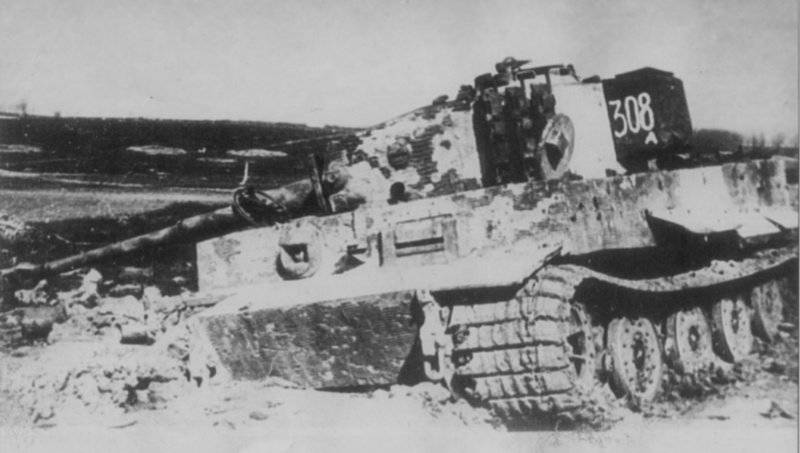
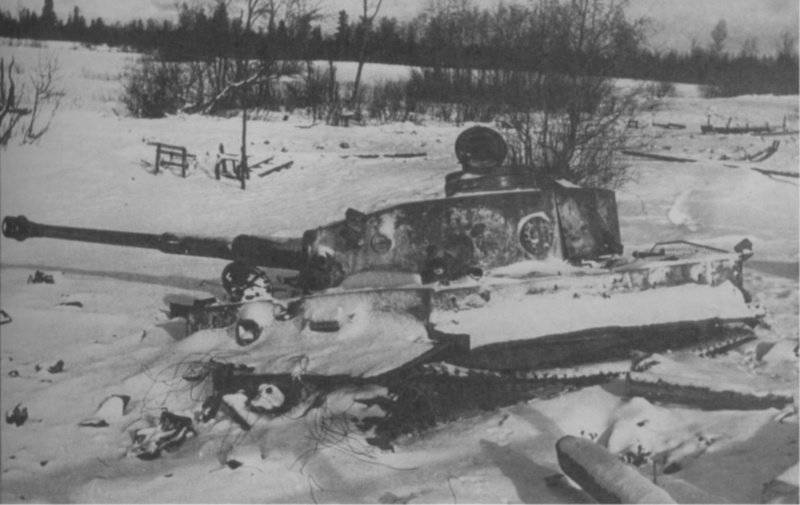
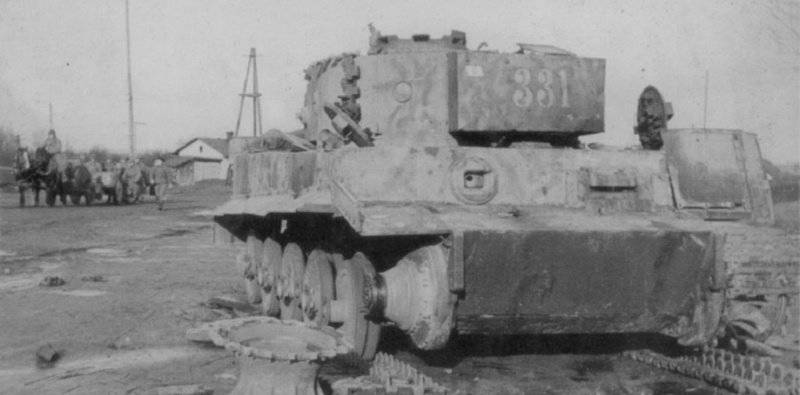
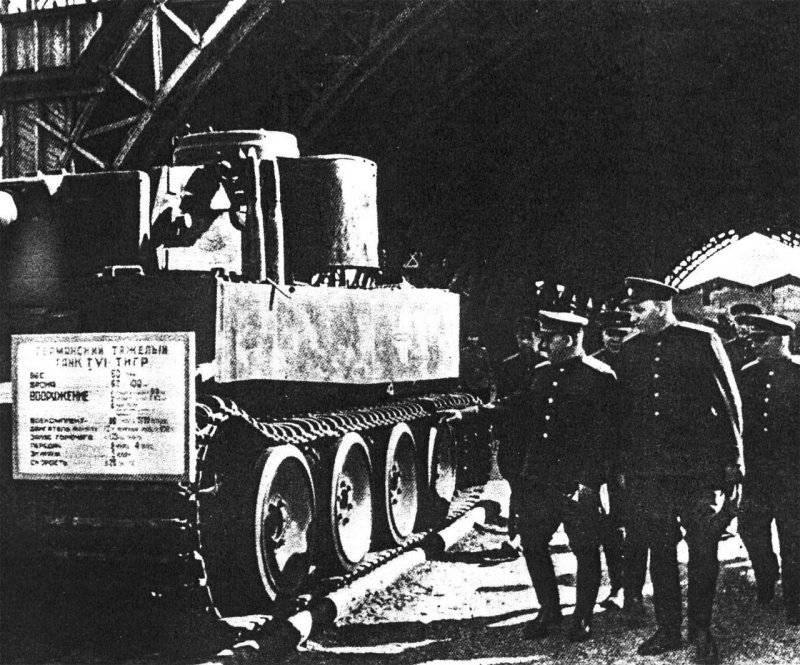
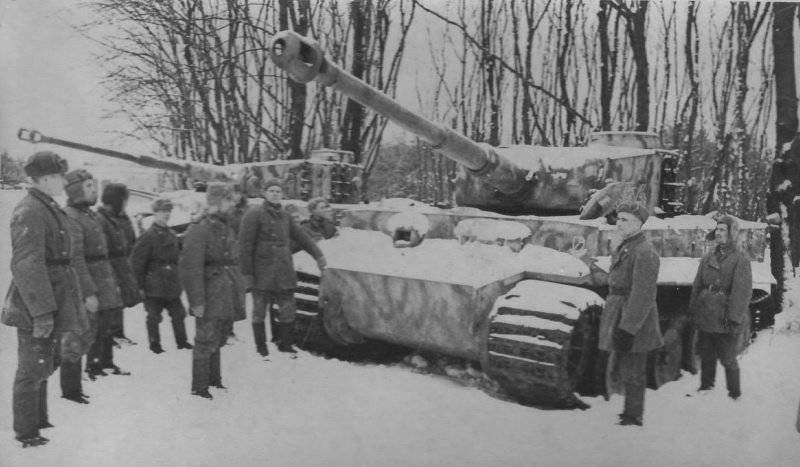
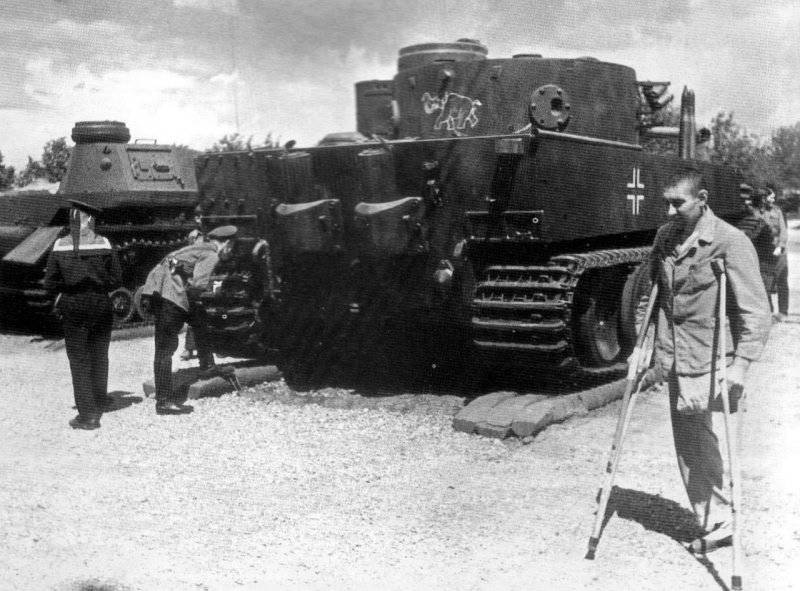
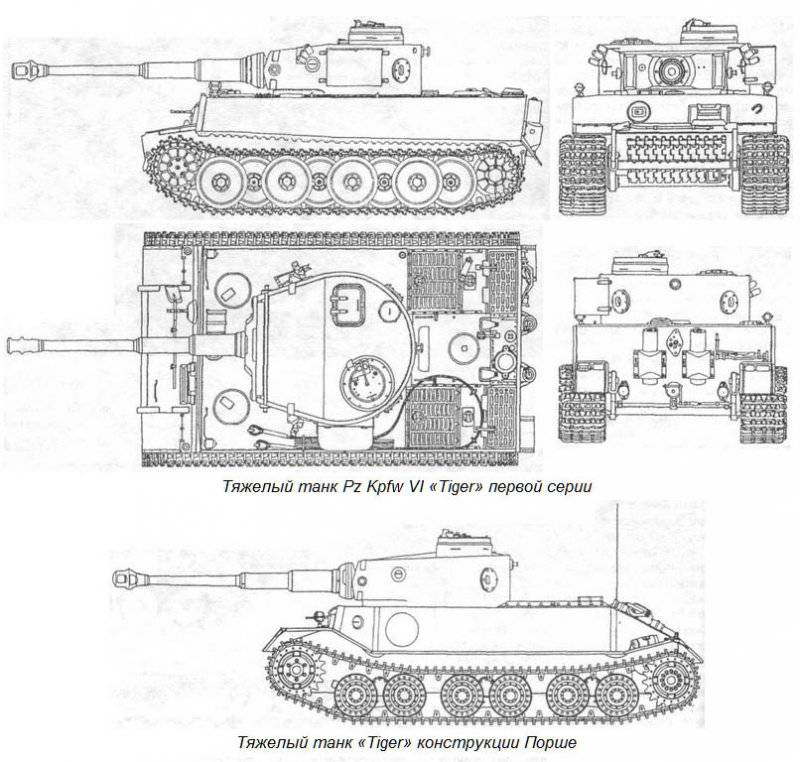
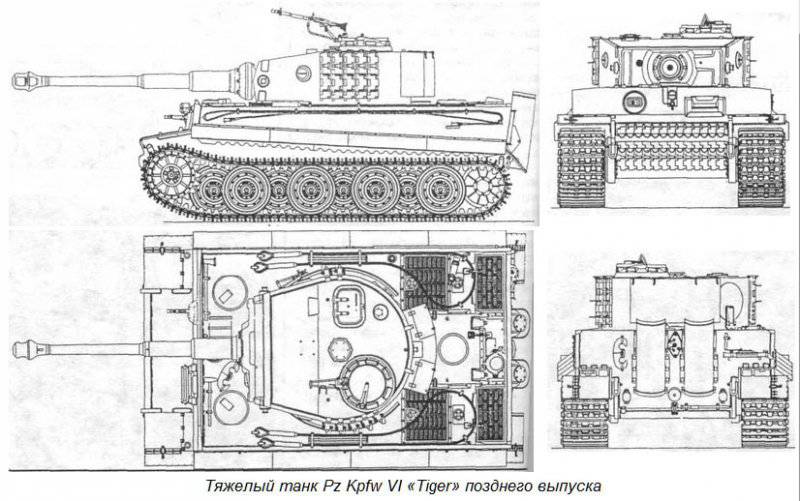
Information